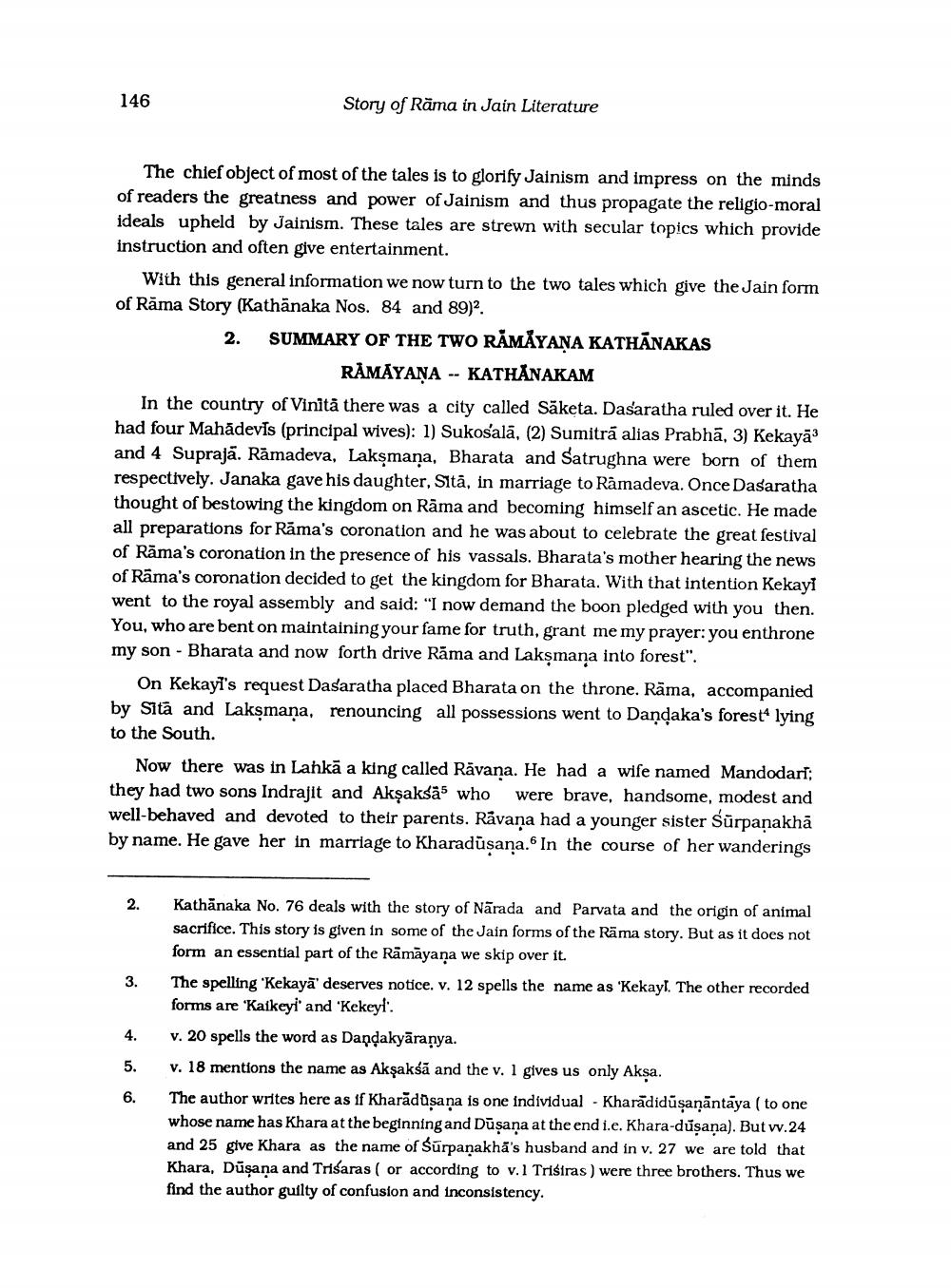________________
146
Story of Rāma in Jain Literature
The chief object of most of the tales is to glorify Jainism and impress on the minds of readers the greatness and power of Jainism and thus propagate the religio-moral ideals upheld by Jainism. These tales are strewn with secular topics which provide instruction and often give entertainment.
With this general information we now turn to the two tales which give the Jain form of Räma Story (Kathānaka Nos. 84 and 89)2. 2. SUMMARY OF THE TWO RÅMÅYANA KATHĀNAKAS
RÅMÁYANA -- KATHÅNAKAM In the country of Vinitâ there was a city called Säketa. Dasaratha ruled over it. He had four Mahādevis (principal wives): 1) Sukosalā, (2) Sumitrā alias Prabhā, 3) Kekaya and 4 Suprajā. Rāmadeva, Lakşmaņa, Bharata and Satrughna were born of them respectively. Janaka gave his daughter, Sità, in marriage to Ramadeva. Once Dasaratha thought of bestowing the kingdom on Rāma and becoming himself an ascetic. He made all preparations for Rāma's coronation and he was about to celebrate the great festival of Rāma's coronation in the presence of his vassals. Bharata's mother hearing the news of Rama's coronation decided to get the kingdom for Bharata. With that intention Kekayi went to the royal assembly and said: "I now demand the boon pledged with you then. You, who are bent on maintaining your fame for truth, grant me my prayer: you enthrone my son - Bharata and now forth drive Rāma and Lakşmana into forest".
On Kekayi's request Dasaratha placed Bharata on the throne. Rāma, accompanied by Sita and Laksmana, renouncing all possessions went to Dandaka's forest lying to the South
Now there was in Lankā a king called Rāvana. He had a wife named Mandodari; they had two sons Indrajit and Akşakšās who were brave, handsome, modest and well-behaved and devoted to their parents. Ravana had a younger sister Sūrpanakhā by name. He gave her in marriage to Kharadūsana. In the course of her wanderings
2.
3.
Kathănaka No. 76 deals with the story of Nārada and Parvata and the origin of animal sacrifice. This story is given in some of the Jain forms of the Rāma story. But as it does not form an essential part of the Rāmāyaṇa we skip over it. The spelling 'Kekayā' deserves notice. v. 12 spells the name as 'Kekayl. The other recorded forms are 'Kaikeyi' and 'Kekeyf'. v. 20 spells the word as Dandakyāranya. v. 18 mentions the name as Akşakśã and the v. 1 gives us only Aksa. The author writes here as if Kharādāsaņa is one individual - Kharādidūsaņāntaya ( to one whose name has Khara at the beginning and Düşaņa at the end i.e. Khara-duşaņa). But w.24 and 25 give Khara as the name of Surpanakhā's husband and in v. 27 we are told that Khara, Düşana and Trisaras ( or according to v. 1 Triširas ) were three brothers. Thus we find the author guilty of confusion and inconsistency.




